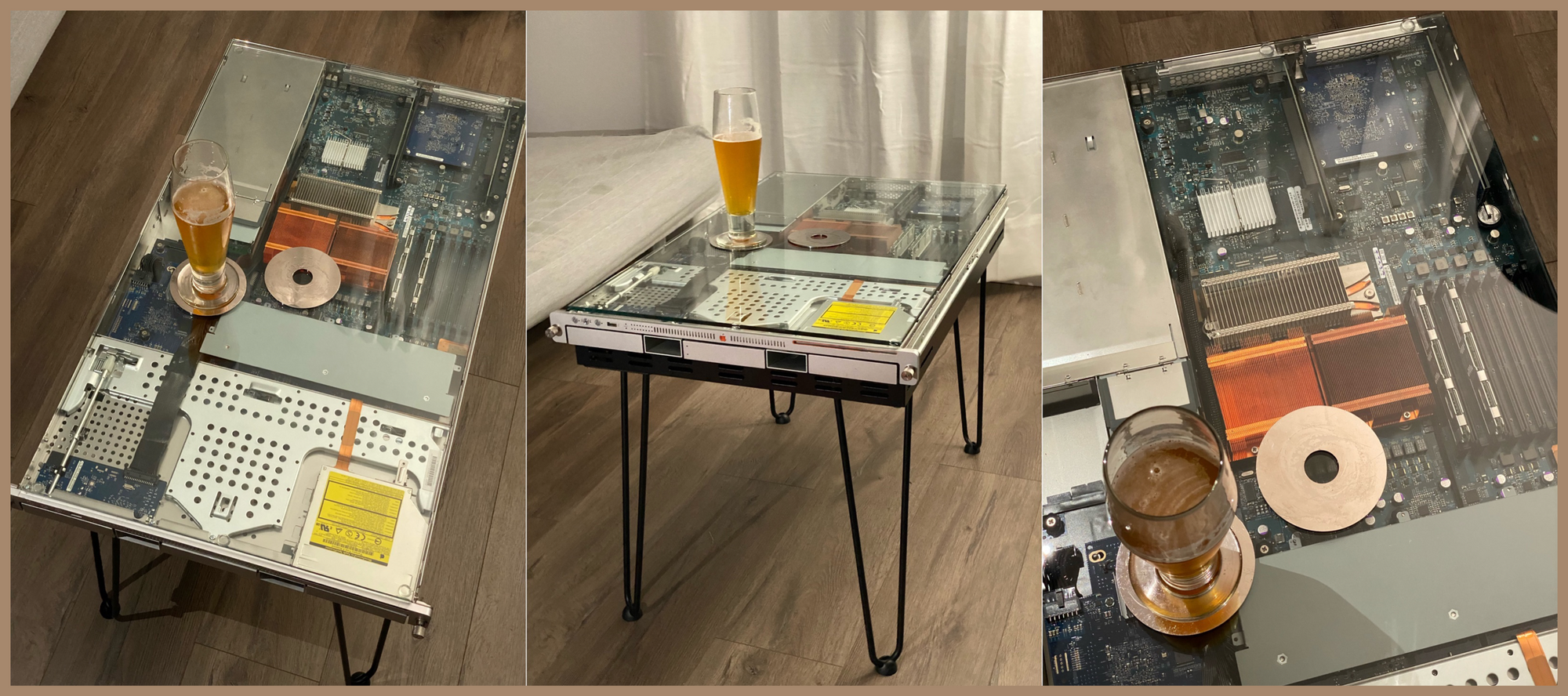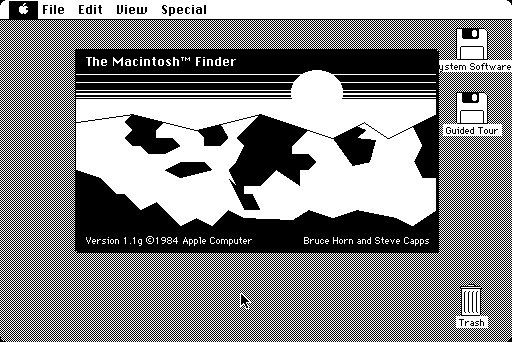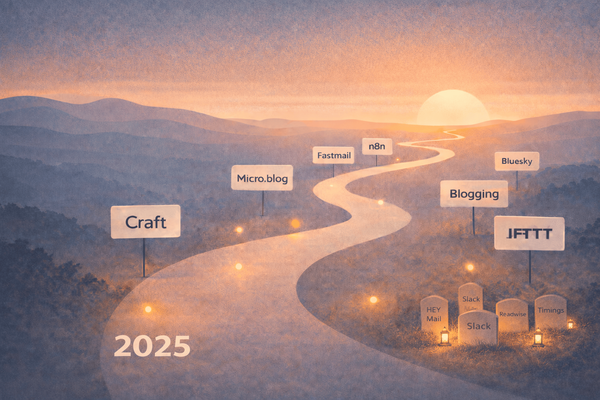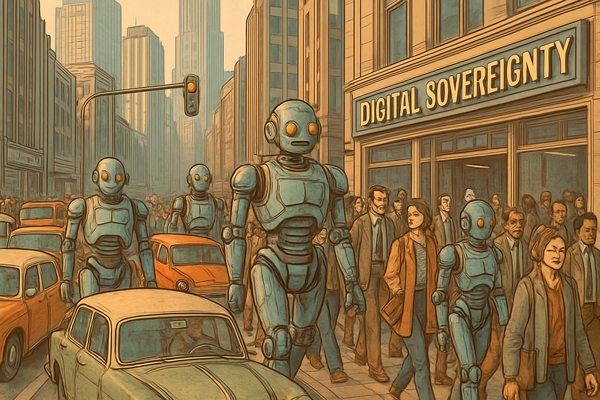Numeric Citizen Introspection Newsletter #18
In this issue: cool use for #Apple’s Xserve. Nostalgia & old Mac software. #Cryptocurrencies & #climatechange. Why security keys are important? What is #solarpunk? Don't count IBM out, yet! #photography #privacyprotection

HIGHLIGHTS
Post highlights for the month coming from my Numeric Citizen Blog, my microblog, my Medium page or from my Numeric Citizen I/O blog.
Bye Bye 500px
This month I said goodbye to my 500px subscription, preferring to continue with my presence on SmugMug and Glass. In the same vain, I didn’t renew my Vimeo subscription either. I’m not a video-type of guy.
Exploring the world of DJing
Besides being a writer, doing some photography, I’m learning to mix music, electronic music, also called DJing. Is it possible to find well-designed DJ software? It's harder to find than I thought.
I’m missing the old Apple Dashboard in macOS
Widgets on macOS Big Sur and later are confined to the Notifications Center, a weird place on the Mac. There is so much more room to place widgets. I want the dashboard back. He wants this too. We’re many who wants Apple to fix the Notifications Center in macOS, this includes removing the widgets from there.
Apple's Universal Control is finally real
I think Universal Control is a heck of a clever technology. Kudos to Apple’s engineers.
I wrote this in 2020-08-04 on Micro.blog: Five gone, one to go.. Still relevant.👀
APPLE TIDBITS
1️⃣ What are the colours of choice these days at Apple, and how does it compare to a few years ago? Well, that’s exactly what the well-known and very talented BasicAppleGuy tried to answer in his article. Expect a colourful ending. Now, what’s interesting to me is how Apple is preparing for these transitions? How do they envision the future of their devices in the next five years and how will they engage in these transitions?
2️⃣ My nephew who happens to like Apple products, sometimes gets his hands on very old Apple hardware that is no longer working. He made this living room table with an old Xserve. By removing the Xserve top panel and replacing it with a glass top, you get to see the internals while having a beer. That is a cool-looking piece of furniture, isn’t it? Would you buy it if it was for sale? I would.

3️⃣ Speaking of having an inside look at something, an interesting article published by Wallpaper offers an inside look at Apple’s industrial design team, and their work environment. Jony Ive, Apple’s former designer in chief is nowhere to be found, obviously. Please, consider taking a moment to look at each photograph in detail. You could be surprised by what you will discover.
4️⃣ Still on the subject of looking inside things, here is an article about peeking inside iOS to determine what language is used for each library on your iPhone. Those are binaries sitting in iPhone’s filesystem. What about apps? Is Mail written in Objective-C? What about widgets, are they built using SwiftUI? How is the selection of language evolving over time? Sure enough, the number of libraries continues to grow with each release of iOS, currently at 4738 binaries. Count me surprised.
5️⃣ If you’re an Apple Music subscriber and have been a user of iTunes back in the days, you probably know that Apple Music isn’t as good as iTunes was to manage a music library. iTunes wasn’t perfect either, but according to this long article, it was much better than Apple Music. If you only stream music from Apple, according to the article, Apple Music isn’t very good in that respect either. Apple has to fix this mess. The author of the article has posted his story on Reddit because, guess what, after sending an email of complaint to Tim Cook, he got a phone call from Tim Cook’s assistant. I guess we can say that Apple is listening.
6️⃣ Now, let’s consider the user interface, the front-facing part of any application sitting on your computer, or iPhone. User interface design is certainly something fashionable, but from time to time, designers seem to have lost their way. Here is a reminder for them, in the following tweet.
Notes for UI designers who have lost their way. pic.twitter.com/gjgkAUrnmz
— CM Harrington (@octothorpe) November 6, 2021
MUST SEE PHOTOGRAPHY STUFF
The nascent photo-sharing service Glass is moving ahead and going to the web. According to a recent blog post, in the next few months, users will be able to use the web as their primary way to interact with the service. Bookmark https://glass.photo/signin. The web is sometimes more satisfying for interacting with a service, more than using a mobile app confined to a small screen. I’ve signed up to be a beta tester. I can’t wait to try it.
The controversial iPhone Photography Awards contest is back this year. Should photographers care? If this is your type of thing, time to submit your best shots, I guess. Personally, I’ll pass.
There are a few cases where the iPhone can’t snap pictures, no matter how hard you try. Consider this high-res photographic montage of a submarine volcanic eruption of the Hunga Tonga-Hunga Haʻapai volcano. Impressive.
Satellite views of the Hunga Tonga-Hunga Haʻapai volcano eruption in 4K on Youtube: https://t.co/QHQTIpDsUx
— Wonder of Science (@wonderofscience) January 16, 2022
Now, let’s get down to earth with this spectacular landing of a Falcon 9 booster. How is this even possible?
10th landing of this Falcon 9 first stage booster pic.twitter.com/6HmNAdU7NY
— SpaceX (@SpaceX) January 13, 2022
Finally, consider this question: “before digital cameras, how did photographers know they got a good shot without being able to view it instantly like how we do now?” From u/annaleecage on Reddit. That’s an interesting question. I should know because I started in photography with a Minolta SRT-200 and a 50 mm lens. Besides trusting your skills, you had to wait for the development of the films or do it yourself. Photo processing with traditional films always was the source of many surprises, good and bad. B&W films were more forgiving, slides film wasn’t.
One more thing, Apple opened another Shot on iPhone contest, this time only macrophotography style is accepted. I decided to submit my best work. The following photo was taken last fall during a photowalk where I took only macrophotography. What do you think?

CLIMATE CHANGE & CRISIS

This month’s climate change & crisis revolves around cryptocurrencies (you know, bitcoins…?). First, what is cryptocurrency again? Cue that video for an “clear” explanation:
Now you understand what cryptocurrency is, right? Next, let’s examine the cost of the cryptocurrency. I mean, the environmental cost. One aspect is the constant pressure on the need for highly performant computing devices like GPU (Graphic Processor Units) to do the required calculation for maintaining the blockchain on which a cryptocurrency depends. Somehow, someone thought they weren’t enough of GPUs, so he created another cryptocurrency called Chia based on the use of hard disk, a “greener” alternative to GPUs. But, guess what? The newly created bitcoin created another worldwide supply chain disruption, this time for hard disks. All is good, right? Nope. Let’s look at the cost behind the scene: power consumption.
All cryptocurrencies are based on blockchains that require a massive amount of computational power (and energy) to even virtually exist. It is a disaster for the environment, and for the climate in general. Not convinced? Let’s have a look on this website (Bitcoin Energy Consumption Index) showing the real cost of transactions occurring when bitcoins change hands or are used to pay for something. From this website, you’ll learn that a single bitcoin transaction can consume as much energy as the power consumption of an average household in 75 days. Think about that for a moment. People are starting, hopefully, to realize that we may be in for a disaster.
One of the founders at Mozilla is realizing just that and this is why they will stop accepting cryptocurrencies as a payment method to receive donations. More like this, please.
PRIVACY PROTECTION

Two-factors authentication codes aren’t as secure as we think. You know when you enter your username and password to use an online service and a code is sent to your phone via SMS? Those are easy to steal. This article explains why (The Booming Underground Market for Bots That Steal Your 2FA Codes). We should be using better means to secure our digital life. Physical security keys could change all that, but at the cost of making your online life complicated. This lengthy article (Getting started with security keys) explains the ins and outs of using better authentication mechanisms.
NOTABLE QUOTES
“It’s supposed to be hard. If it wasn’t hard, everyone would do it. The hard is what makes it great.” — Manton Reece on Micro.blog
“There are decades when nothing happens, and then there are weeks when decades happen.” — Vladimir llyich Lenin
“Problems grow the size they need for you to acknowledge them.” — Luka Dell’Anna
"If I fail, I'll try to make sure it's in a new and novel way" — The Phoenix Project, page 22.
SOME LEFTOVERS
1️⃣ Buildings form the skyline of many cities around the world. As we move forward to an uncertain future from an environmental perspective, we need to imagine new constructions in a different and more environmentally friendly way. Take the American University of Dubai architecture projects. One of them caught my attention: Sustainable Design Award: Plantae Tower by Basant Abdelrahman. It’s an impressive and well-thought-out concept explained in detail on the author’s Behance page.
2️⃣ What would look San Francisco if it would get denser? How do you cope with more population, more buildings and streets? How do you create neighbourhoods that offer great living experiences? You have to imagine and draw pictures of these beforehand. This article explains the idea behind drawing pictures of cities and their future. While reading the article, I learned about the solarpunk movement and started to search for drawing examples. I love that so much.

3️⃣ Are ringtones still a thing among smartphones users? When I was a Blackberry user, I remember trying to decide which ringtone to use when the phone rings or when a new message comes in. There were a lot of different tones to choose from. Today with the iPhone, we still can change the ringtone for when the phone rings or when a new message comes in. I recently came across this catalogue of ringtones: Cleartones. I immediately fell in love with the website design and the many ringtones available. I bought them all and played with them. The only problem: it is too hard to decide which one to choose from. Now, my iPhone sounds more like a Blackberry.
4️⃣ Speaking of the Blackberry, January 4th was a historic day for remaining Blackberry users, according to their FAQ: most of the communication functions of the device came to an end and could stop working. That’s certainly the end of an era. How many of them were still using such devices? I’m curious.
WHAT’S NEXT
This section should be about the near future, but I’m feeling nostalgic because I’ve been working on a very special article about every Apple computer I ever owned and used. The Blackberry story previously presented is certainly also marking the passing of time. Let’s go back in history and have a look of Apple’s website page over time, more specifically, the tabs configuration at the top. What trend do you observe? Personally, I find the design trend surprising. The tab order is a bit weird to me: as we read from left to right, the iPhone should be next to the Store tab, right? Now, coming from a design company like Apple, the flat design of recent years is saddening. The year 2010 or 2011 offers the best-looking versions of the tabs bar.
Still feeling nostalgic, that’s why I loved this blog post from Riccardo Mori showcasing a very old About Box of well-known softwares. It made me recall so many memories of the time when I was using the Mac in the early days. My preferred one is missing though: the Finder 1.0 About Box with a landscape and the sun in the sky which I reproduce here. It wasn’t a bitmap but a series of QuickDraw calls that generated the landscape.

Finally, speaking of history, don’t count IBM out yet even though we don’t hear about them as much as we used to in the seventies, eighties and nineties. Together with Samsung, they came out with an innovative semiconductor breakthrough that will enable much denser microprocessors. IBM is still doing a lot of research & development. See the official press release here.
I want to conclude this edition of this month’s newsletter with the words of Om Malik, from a recent blog post of his about social media:
“There is no other way of putting it — we are addicted to the idea of an audience. When we go online, we are programmed to react to engagement triggers — likes, shares, retweets, hearts, and thumb-ups. Social and this addiction of audience have made us addicted to something even harder to give up once tasted: a constant feeling of self-importance.“
This concludes the Numeric Citizen Introspection Newsletter edition #18 for January of 2022.
Support my work through PayPal or by becoming a paid member here (it’s only 3$ a month or 25$ a year) 🙏🏻. You can always sign up here for free. Thanks a lot for your support.



